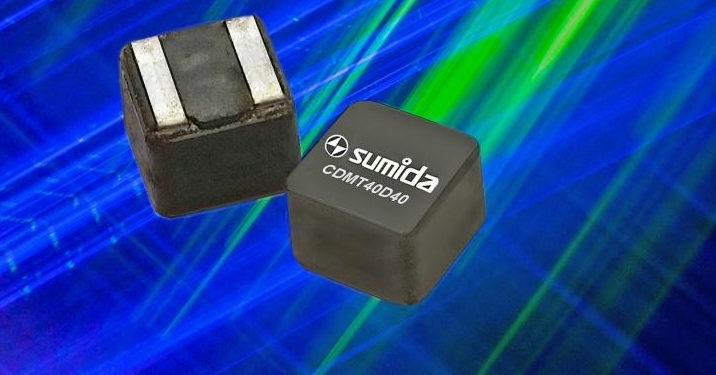source: ECN mag news
Sumida Corporation has made a significant expansion to its lineup of Metal Hybrid Inductors, known as the CDMT40 series. The three additional values offer more than double the inductance values of the earlier introductions, while maintaining the same small footprint. A newly developed composite material draws on the unique characteristics of two different metals in the mold structure to provide magnetic shielding, very small size, and high current ratings. The CDMT40D40 also contributes less resistance, when compared with conventional shielded inductors of the same size.
Market demands for lower power consumption in portable and other high-performance devices led Sumida to research ways to improve efficiency without impacting other critical characteristics. High efficiency and low-loss power circuit are increasingly important in all types of circuits. The molded magnetic construction of the CDMT40D40 meets that requirement.
Sumida CDMT40D40 Series Power Inductors also overcome the challenge of handling high-currents where board space and height are at a premium. Saturation current for the 8.2 µH value is nearly 3.2 amps. Maximum size for all values is just 4.3 x 4.3 x 4.1 mm.
Available inductance values are 8.2, 10, and 15 μH. DCR is as low as 54 mW (typ.@ 20° C). The device is RoHS compliant and halogen-free. The CDMT40 Series offers a full-rated temperature range of -40° to +125° C, and solder reflow temperature to 260° C peak. It complies with IPC/JEDEC Moisture Sensitivity Level 1, for unlimited floor life at ≤30° C/85 percent RH.
Applications include telecommunications base stations, servers, SSD, DC-DC converters, and other designs requiring the combination of high current and very low profile. Standard packaging is carrier tape and reel packaging, 7.0” diameter reel, 500 pcs per reel.
Like other Sumida products, CDMT40 Series power inductors meet or exceed the highest industry standards for quality and repeatability. Full application engineering support is available.
The CDMT40 Series power inductors are available with 30 day delivery and in-stock at popular distributors.































